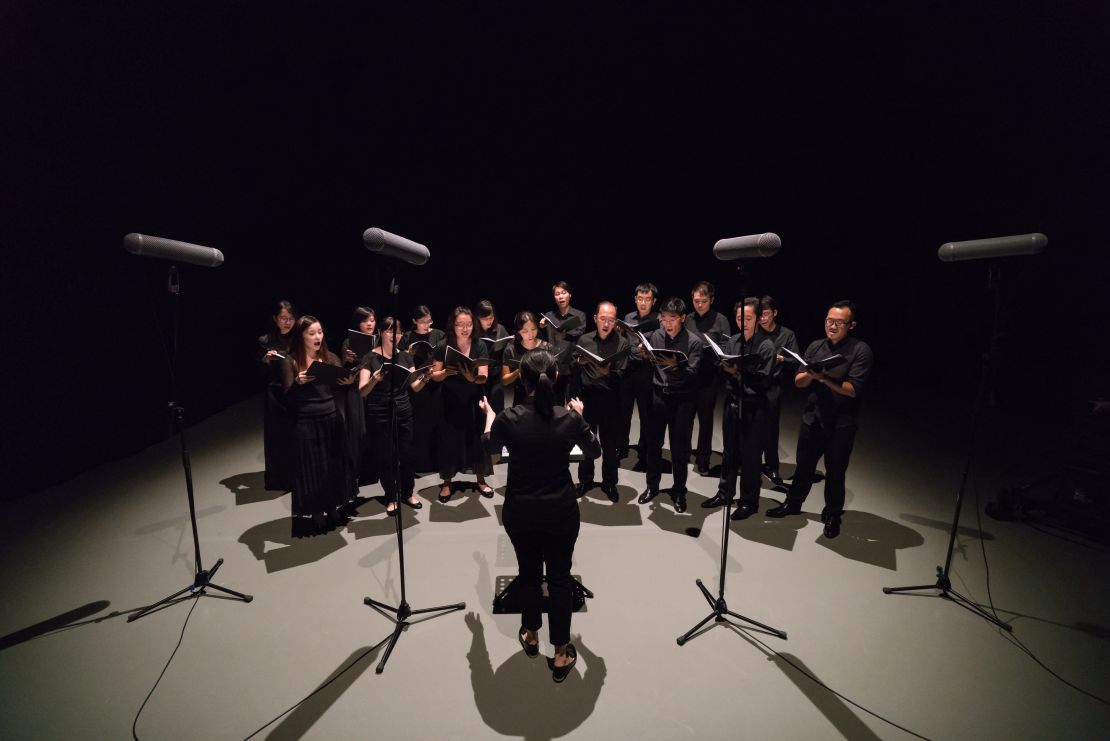In May 2017, a groundbreaking court ruling put Taiwan on course to become the first place in Asia to legalize same-sex marriage.
A few months on, a Taiwanese art museum is set to achieve another milestone by hosting what it believes to be the first major exhibition dedicated to LGBTQ-themed art in Asia.
Titled “Spectrosynthesis – Asian LGBTQ Issues and Art Now,” the upcoming show at Taipei’s Museum of Contemporary Art will feature 50 works by 22 ethnically Chinese artists from around the world.
The exhibition is aimed at promoting a better understanding of the LGBTQ experience in Asia, according to curator Sean Hu.
“The works relates to issues facing the Chinese LGBTQ community and our life stories,” he said in a phone interview. “It symbolizes a slice of our history.
“We hope the exhibition has a ripple effect across Asian society, and leads to people respecting different sexual orientations,” said Hu, who is also an activist for LGBTQ and ethnic minority issues in Taiwan.
Diverse perspectives
Exhibiting artwork from the last 50 years, the show encompasses a variety of mediums, from paintings to video art. The artists featured include Chinese-American filmmaker Wu Tsang, and Samson Young, who is representing Hong Kong at this year’s Venice Biennale.
Singaporean artist Jimmy Ong has contributed a collection of large-scale charcoal artworks addressing gender and sexual identity. Many of the images depict gay couples with their children, a theme often explored in Ong’s art.

“I wanted to grant a pictorial vocabulary for gay people to view their marital statuses, which are absent in regular Asian artworks,” he said in a phone interview. “And they’re definitely absent in family portraits.”
Two pieces from Ong’s “Ancestors on the Beach” series also feature in the exhibition. The works reference a beach that was popular among Singapore’s queer community in the 1990s, though it was subsequently targeted by plainclothes policemen masquerading as gay men.
“It was a time when there were many people who were persecuted,” Ong said. “Some were even publicized in the local newspaper.”
Not all of the exhibition addresses LGBTQ issues so directly, according to Patrick Sun, the founder of Sunpride Foundation, a not-for-profit art organization which helped organize the show. Young’s “Muted Situation #5,” for instance, was created by stripping the music away from a choral performance, leaving only the background sounds.
“Samson (Young)’s work doesn’t deal with sexuality,” Sun said in a phone interview. “But if you put something like that in a LGBTQ exhibition, then people will understand [the message].”
“You can pare these issues down to basic values that we can all talk about and respond to,” agreed Young on the phone. “They aren’t limited by your perceived proximity to them.”
A long road
Taiwan’s LGBTQ-themed exhibition appears to have been carefully timed. It coincides with both Art Taipei, Asia’s oldest art fair, and Taiwan Pride, Asia’s largest gay pride parade.
But while the show comes just months after the island’s landmark court ruling, it has been in production for the past two years.
Taiwan had always been the curators’ first choice of host, as it has been widely regarded as one of Asia’s most progressive places on LGBTQ issues.

“We wanted to (host) the show in an official government museum because we think the institution stands for the government’s attitude towards LGBTQ issues,” said Hu. “Being accepted by the government, we’re more influential to the whole of society in promoting LGBTQ issues. We also wanted to push the government to further protect equal rights.”
“We want to reach not only the LGBTQ community or art circles – we want a general public (audience),” added Sun. “That’s why we launched the exhibition in a public institution.”
Looking to the future
The exhibition’s organizers have high hopes for the show’s future. Sun wants to bring the artworks to his home city of Hong Kong, while Hu wants to take the exhibition to Japan, Korea and less socially liberal Asian countries, like China and Thailand.
“We hope that the public will have a better understanding for the LGBTQ community after seeing the show,” said Sun,” and that the LGBTQ community will feel less isolated and lonely – more proud and confident to be who they are.”
“Spectrosynthesis – Asian LGBTQ Issues and Art Now” is showing at the Museum of Contemporary Art Taipei (MOCA) from Sept. 5 to Nov. 5, 2017









